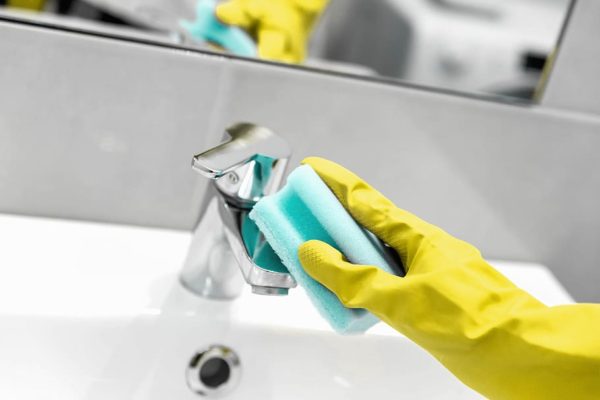Liquid Fire is one of those products that instantly stands out in the plumbing aisle. The bright red bottle, the bold lettering, and the promise to “melt away clogs fast” give it an almost superhero quality. But behind that packaging is a chemical that deserves respect and caution. Liquid Fire is not just another household cleaner. It contains concentrated sulfuric acid, which is one of the most dangerous substances a person might store under their sink. Reading through warnings on the label, government safety sheets, and real user experiences shows why the product should never be taken lightly. This essay will explain the official warnings about Liquid Fire, how those warnings play out in real life, and what lessons homeowners should keep in mind.
The first and most obvious warning is about burns. Sulfuric acid is corrosive, meaning it eats through organic material and metal. The bottle warns users to always wear gloves, goggles, and protective clothing. Even a tiny splash on skin can cause burns, and if it gets in the eyes it can lead to blindness. A chemical safety database maintained by the U.S. National Library of Medicine notes that sulfuric acid burns are different from ordinary burns because the acid keeps damaging tissue even after the first contact. Doctors often report that patients who come in with acid burns require immediate neutralization and sometimes long-term skin grafts. The warning is not theoretical, there are plenty of news stories and medical case reports showing what happens when people ignore protective gear.
Another big warning is about fumes. The safety sheet explains that using Liquid Fire in a poorly ventilated area can release sulfur dioxide gas, which irritates the lungs. Bathrooms, basements, and laundry rooms without windows are common places where this warning comes into play. Poison control centers in states like Florida and Texas have reported calls from people who felt dizzy or nauseous after using the product in closed spaces. In some cases, children or pets were exposed without realizing the danger. One Reddit thread includes a story from a homeowner who poured Liquid Fire into a clogged basement drain and felt lightheaded within minutes. They later wrote that they were lucky to leave the room before passing out. These warnings about fumes are not just fine print — they reflect real dangers that can happen quickly.
The label also warns against mixing Liquid Fire with other chemicals. This is a critical warning because many people try multiple cleaners before resorting to Liquid Fire. For example, someone may pour bleach or ammonia into a drain and then, out of frustration, add Liquid Fire. The result can be an explosive reaction, releasing toxic gases like chlorine. The Environmental Protection Agency (EPA) has documented multiple household accidents where dangerous gases formed from mixing cleaners. In one case in New Jersey, emergency responders had to evacuate an entire apartment building because of fumes caused by a chemical mix in a drain. The warning about never mixing products is not just about wasted money — it can literally be about saving lives.
There are also warnings related to the plumbing system itself. Liquid Fire is advertised as safe for most types of pipes, but with conditions. The fine print warns that overuse or prolonged contact can damage PVC or corrode older metal pipes. Plumbers across different regions report seeing this first-hand. A plumber in Michigan posted on a local forum that he frequently gets calls from homeowners whose pipes warped after repeated use of Liquid Fire. In the Southwest, where many homes use plastic piping to save costs, plumbers often warn against using strong acids like this at all. Geography plays a role because homes built in the 1950s in New England may have thick cast-iron pipes, while newer homes in California often have lightweight PVC. The warning matters more in some regions than others, but ignoring it anywhere can lead to costly repairs.
The warnings also extend to storage. The label makes it clear that Liquid Fire should be kept away from children and pets. Because it is packaged in a bright red bottle, young children may mistake it for something less harmful. Consumer safety organizations have pointed out that accidental poisonings often happen because dangerous cleaners are stored under the kitchen sink. In hot climates like Arizona, where garage storage temperatures soar above 110°F, there are also risks of containers degrading or leaking. Homeowners in these areas are often advised to store such chemicals in cool, locked cabinets, but many do not. The warning is simple: keep it out of reach and in a safe place, but statistics show that accidents still happen.
Another critical warning is about overuse. Some people believe that pouring more Liquid Fire will speed up results. In reality, too much acid can generate enough heat to crack porcelain sinks or loosen plumbing joints. Warnings on the bottle specifically tell users to measure carefully. A story from a user in Georgia described how they poured nearly half a bottle into a shower drain. The clog cleared, but the reaction produced steam that cracked the bathroom tile. This is a good example of why the measurement warning exists — too much product can do more harm than good.
The manufacturer also issues warnings about using Liquid Fire as a “first step” cleaner. They advise trying mechanical methods like plungers or snakes before turning to the product. This is partly to reduce unnecessary accidents and partly to protect plumbing. But in reality, many users ignore this warning because they want a quick fix. Reviews on Amazon and Reddit often include comments from people who only read the warnings after something went wrong. It highlights the human tendency to overlook instructions when frustrated by a stubborn clog.
Some warnings are more about common sense, but they are still included for legal reasons. The label warns against ingesting Liquid Fire, even though no reasonable person would intentionally drink it. Yet poison control centers confirm that accidental ingestion cases occur every year, usually involving children. There are also warnings against using it outdoors where it can run into storm drains. Environmental agencies warn that sulfuric acid can harm fish, plants, and aquatic ecosystems if it enters untreated waterways. This warning is especially relevant in states with heavy rainfall, like Louisiana or Florida, where runoff happens quickly.
In real life, ignoring these warnings has consequences that go beyond the immediate household. Emergency departments see the results of chemical burns and poisonings. Plumbers see the results of damaged pipes. Environmental inspectors see the results of improper disposal. The warnings are not exaggerated or hypothetical; they reflect real-world risks backed by decades of accident data.
In conclusion, the warnings on Liquid Fire drain cleaner are extensive for a reason. They cover everything from personal safety and pipe protection to environmental concerns. Real stories from across the United States show how ignoring these warnings leads to serious accidents, injuries, and expenses. Whether it’s burns, fumes, or damaged plumbing, the dangers are well documented. The lesson is clear: Liquid Fire is not an ordinary household product. It should be used with extreme caution, only as a last resort, and always according to the directions. Respecting the warnings is the difference between a solution and a disaster.







